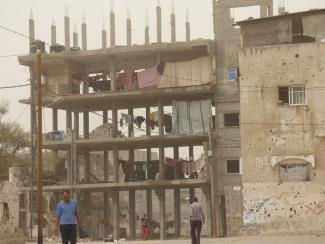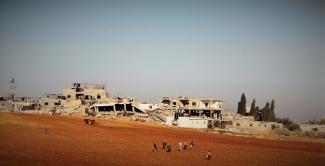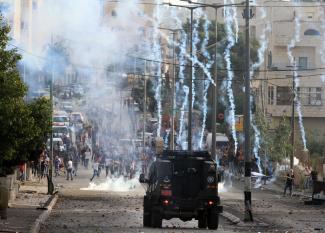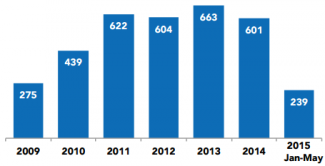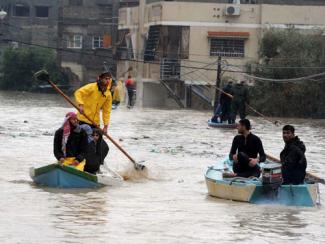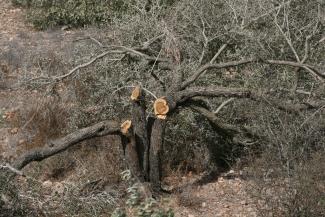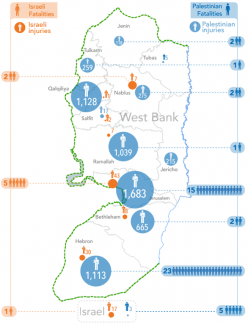The longstanding divide between the Palestinian authorities in the West Bank and in the Gaza Strip continues to impede the delivery of basic services in Gaza. Despite the formation of a Government of National Consensus (GNC) in April 2014, the GNC has been unable to assume full responsibilities in Gaza due to lack of agreement on key questions related to the transfer of powers.
The Monthly Humanitarian Bulletin | October 2015
In this document
The ICRC is one of the few organizations that can access the restricted areas in border areas along Gaza’s perimeter fence with Israel, and the organization is facilitating the relevelling and ploughing of farm lands in these areas. By the end of 2015, for the first time in over a decade, approximately 500 farmers will be able to access farm land situated between 100 and 300 meters from the fence, in areas that farmers have not been able to cultivate for the past seven to 15 years.
The rise in violence that began in mid-September throughout the occupied Palestinian territory (oPt) escalated significantly during October. Widespread protests leading to violent clashes with Israeli forces have been accompanied by almost-daily stabbings or alleged stabbing attempts of Israelis by young Palestinians, most of whom were shot and killed on the spot.
The number of demolitions fell in September 2015 compared with August, which had the highest number of structures demolished (145) by the Israeli authorities in five years. A total of 13 Palestinian-owned structures were demolished for lack of an Israeli-issued building permit, displacing nine people (including five children).
As of early October, reconstruction of 1,134 homes totally destroyed during the 2014 hostilities, constituting less than ten per cent of the total caseload for this category (12,584) was reportedly underway. The reconstruction of the first totally destroyed home funded by UNRWA was completed in October. Funding for an additional 2,250 units, or a further 16 per cent of the caseload is reportedly confirmed, although the timing for the actual financial transfers and the start of work on the ground remains unclear.
As the rainy season begins, thousands of families in Gaza will once again be at risk of temporary displacement and destruction of their assets due to potential floods. The winter weather conditions are expected to exacerbate the already fragile living conditions and livelihoods of the population, particularly IDPs.
The olive harvest season started during October amidst escalating clashes and attacks (see section on Escalation). There were also recurrent concerns about restrictions on the access of farmers to their olive groves in certain areas and about inadequate law enforcement in the face of settler violence.
The Palestinian protests and confrontations with Israeli police that began in mid-September in the Haram Al Sharif/Temple Mount in East Jerusalem’s Old City, rapidly spread throughout the oPt, including all parts of the West Bank and the Gaza-Israel border areas. What followed in October was a wave of violence characterized by demonstrations, violent clashes, and deliberate attacks against civilians that, by the end of the month, left 69 Palestinians and eight Israelis dead and more than 7,300 Palestinians and 115 Israelis injured.
